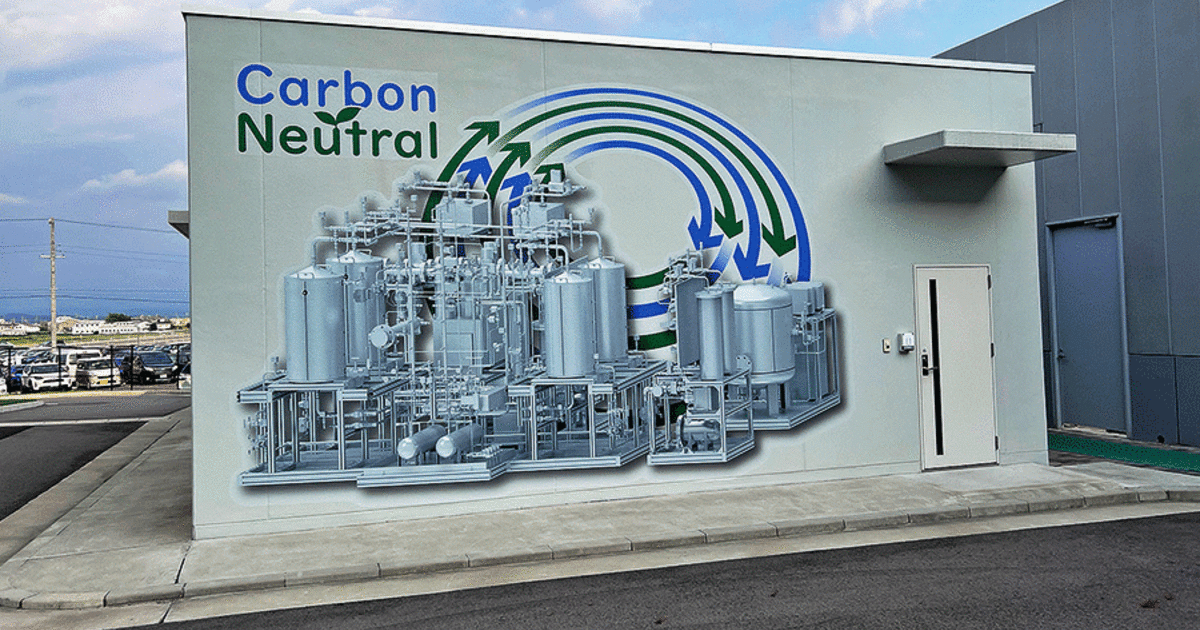
ANJO, Japan — Denso Corp.’s massive Anjo plant churns out all manner of automotive components, from power control units and electric motor stators to lithium ion battery packs and alternators.
Its aluminum smelter also churns out thousands of tons of carbon dioxide every year, posing a serious hurdle to the Japanese supplier’s goal of going carbon neutral by 2035.
But thanks to an innovative carbon capture technology, Denso believes it can turn that greenhouse gas into a future energy source. The method is called carbon dioxide circulation, and it combines the waste emissions with hydrogen to produce methane that, in turn, can help power the plant.
“The world is now transitioning from low carbon to zero carbon,” Kazuya Komagata, general manager for environment neutral system development at Denso, said during a recent briefing.
“What we are thinking about is carbon neutrality in the manufacturing process,” he said. “So carbon dioxide capture is important, either recycling it or possibly converting it into fuel.”
Denso is testing the system at its plant here near Nagoya and wants to introduce it at other plants as it endeavors to slash the 800,000 tons of carbon it emits every year in Japan.
Denso’s Anjo plant is home to the company’s Electrification Innovation Center, where it develops and manufactures next-generation technologies for battery-powered cars. And a pilot facility there, housed in a small box-like outbuilding, is where the magic happens.
Inside, a complex tangle of pipes, tanks, dehydrators, generators and catalyzing equipment synthesizes methane by combining carbon dioxide with hydrogen.
The carbon dioxide is piped into the building from an aluminum smelting facility on the other side of the sprawling Anjo complex, where the emissions are captured.
The hydrogen is generated on-site by electrolyzing water with electricity.
That electricity is green and renewable, generated by solar panels at the factory. Today, the oxygen split from the hydrogen through electrolysis is released into the atmosphere. In the future, Denso plans to capture the oxygen, too, as another source of power combustion.
The synthesizing facility combines hydrogen and carbon dioxide through a catalyst reaction to create methane, a chemical compound consisting of one carbon and four hydrogen atoms.
The idea is to recoup the resulting methane and reuse it as a fuel source. Carbon given off through its combustion can, in theory, be recaptured and recirculated through the same process.
Denso could use that methane to help fire the aluminum smelter. But for the time being, the innovative technology is barely making a dent.
Anjo’s smelters emit about 7,000 tons of carbon dioxide a year. The new system is capturing only about 8 tons.
That’s enough to generate about 7 kilowatts of methane, Denso says.
Among other things, the energy efficiency of the system must improve, Komagata said.
To be effective, the energy efficiency of the system — from the power needed to generate the hydrogen through to the final methane — needs to be 80 percent. Today, it’s less than 50 percent.
From 2023, Denso will experiment with feeding the synthesized methane through a solid oxide fuel cell, a class of high-temperature fuel cell that can generate electricity from hydrocarbons. That setup should have higher energy efficiency than today’s water electrolysis approach.
Denso won’t say how much it has invested in the system.
Still, the technology is an important steppingstone toward the supplier’s long march toward carbon neutrality.
Capturing carbon emissions before they leak into the atmosphere is key to the plan.
The other legs of the strategy are reducing energy usage and switching to renewable sources.
The Anjo plant, which employs about 3,800 people and covers 142 acres, is the only site where Denso deploys the technology, using city gas to fire its aluminum smelter.